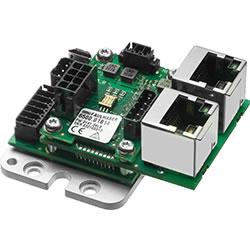A-Game: Transforming Modern Sportswear with Automation and IIoT
Sportswear brands have always competed on the basis that they can offer athletes a competitive edge during competition. But while this once came through human-led processes, machines, robots and automation have taken over. While early automation allowed brands to increase the speed of production, this didn't automatically equal an increase in quality.
With the introduction of automation and IIoT however, brands are now able to offer high quality garments that are manufactured quickly and efficiently. Not only has this been used by global brands, but it's also lowered the barrier of entry into the market, allowing innovative startups like A-Game to lead the next generation of activewear.
In the early days of digital design, computer aided design (CAD) and computer aided manufacturing (CAM) were used to create garments digitally before using an automated machine to produce prototypes. When CAD/CAM was first introduced into the sportswear manufacturing process, a human was still required to put the finishing touches on items.
With the introduction of IIoT, the whole process can now be automated. Smart sensors are used in conjunction with knitting and sewing equipment to assess data around things like tension and temperature. As a result, the construction of sportswear can now be completed by a machine to a far higher level of precision and consistency that a human could ever achieve. It's common for humans to still oversee the whole process although machines are now even capable of alerting humans to issues and identifying how errors can be resolved.
The introduction of these advanced technologies have brought a range of benefits to the sportswear industry. Along with offering athletes a better standard of clothing, automation has helped to reduce waste and improve quality control. With computers able to cut, sew and stitch to far more precise levels, it leaves brands with very minimal excess waste.
As sportswear evolves, technology will continue to be closely aligned with the industry, allowing brands to be in a strong position to respond to any trends and developments. For instance, customisation in activewear has become an increasing demand in the space, but through automation and IIoT, brands have been able to adapt quickly. We can also expect increasing pressure to be put on brands to be more sustainable, which will impact the way they use automation. Naturally, these processes have become more and more sustainable but with the advancement of AI technology, it's expected that these processes will reach a new level of accuracy and sustainability.
Featured Product

